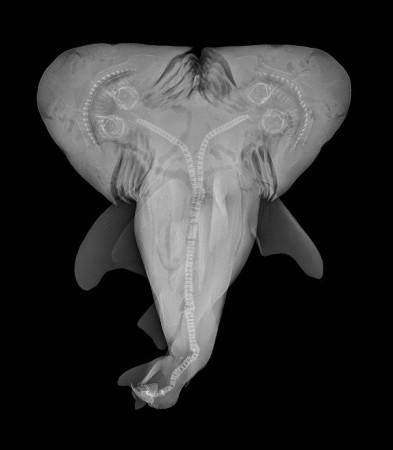
A fisherman had a surprise of his life when he caught a bull shark with two heads in the Gulf of Mexico, off the coast of Florida, in April 2011.
He shared the specimen with scientists who have now confirmed that the shark is a single specimen with two heads, rather than conjoined twins.
The details of the findings were published on Monday (25 March) in the journal 'Fish Biology'.
This is not the first time that a two-headed shark has been seen, but only few specimens have been recorded. Several species of sharks including blue sharks and tope sharks have been found to have two heads. However, this is the first ever record of dicephalia (condition of having more than one head) in a bull shark.
"This is certainly one of those interesting and rarely detected phenomena," study co-author Michael Wagner, assistant professor of fisheries and wildlife at the Michigan State University, said in a statement. "It's good that we have this documented as part of the world's natural history, but we'd certainly have to find many more before we could draw any conclusions about what caused this."
For their study, Wagner and his research team used the technique of magnetic resonance imaging (MRI) to examine the bull shark. The MRIs revealed that the shark had two distinct heads, hearts and stomachs. The remaining parts of the body were joined at the back half of the animal to form a single tail.
According to scientists, the bull shark's odd appearance is a deformity, which is technically termed as "axial bifurcation". Deformity happens when an embryo splits into two different organisms, but stops dividing halfway through the process, reports OurAmazingPlanet.
Such rare mutations occur in different animals including snakes, turtles and even humans, said the researchers. However, they said that such odd looking specimen wouldn't survive for long years in the wild. "When you're a predator that needs to move fast to catch other fast-moving fish ... that'd be nearly impossible with this mutation," Wagner told OurAmazingPlanet.
It is not clear as to what caused the deformity in the bull shark. Wanger noted that some might attribute it to the sharks' exposure to pollutants caused by the Deepwater Horizon oil spill in Gulf of Mexico, in 2010. "Making that leap is unwarranted. We simply have no evidence to support that cause or any other."
Wagner also added that the deformed bull shark could help in understanding deformities that occur in sharks and other animals.














